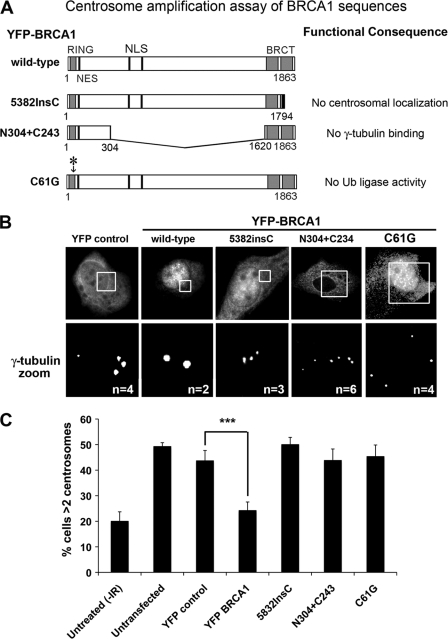FIGURE 3.
Centrosome targeting domains of BRCA1 are insufficient for the regulation of centrosome amplification. A, diagram of different BRCA1 peptides tested for their ability to regulate centrosome amplification (including the minimal centrosomal targeting sequence) and their main functional defects. B, YFP-tagged BRCA1 proteins were transiently expressed in HCC1937 breast cancer cells, which harbor the endogenous BRCA1 mutation 5382InsC and have a defective DNA damage checkpoint. Cells were treated with 10 Gy of IR and left to recover for 48 h. After fixation with acetone/methanol, cells were immunostained with anti-γ-tubulin antibody and scored by microscopy for the number of cells displaying centrosome amplification (>2 centrosomes/cell). Representative cell images are shown for each BRCA1 peptide, showing similar expression levels of transiently expressed proteins and close up images of centrosomes. The number of centrosomes in each imaged cell is noted in white. C, IR-induced centrosome amplification was reduced by overexpression of WT BRCA1 but not by various mutated forms of BRCA1, including the minimal targeting sequence (N304+C243). Scoring results were obtained from three independent experiments with at least 100 cells scored (mean ± S.D. (error bars)). Student's t test was used to determine that only YFP-BRCA1 wild type was statistically significant in regulating centrosome amplification in comparison with YFP control. ***, p < 0.001.

